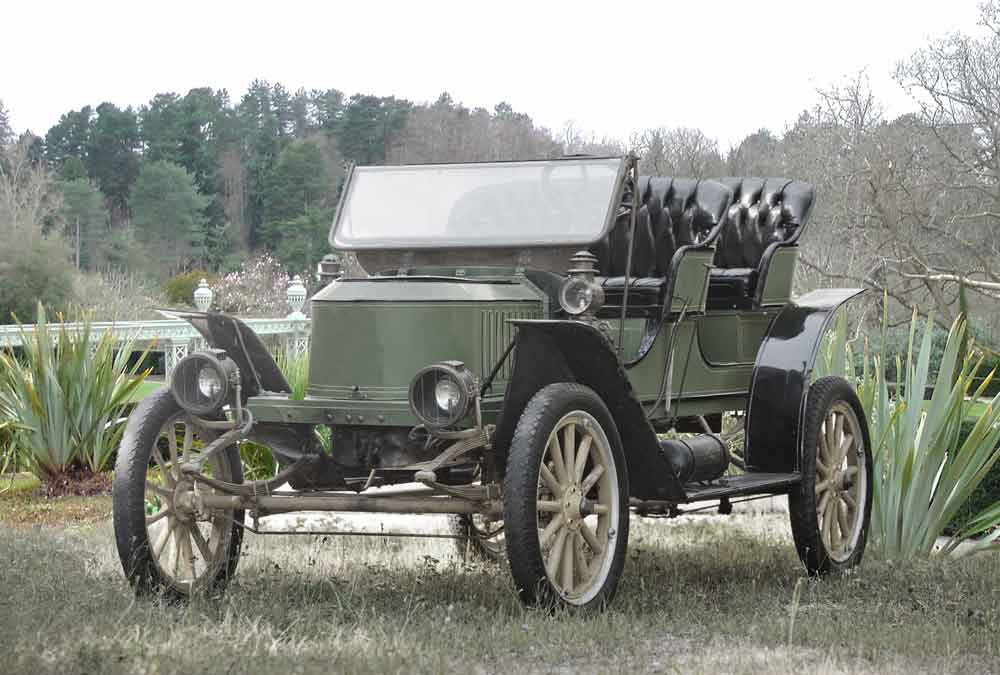Stanley Runabout


In 1896 twins Francis and Freelan Stanley were contentedly running their photographic plate business when they went to a Massachusetts display of so-called horseless carriages. They were smitten by this new technology and within weeks they had sold their business to Kodak with the intention of spending the rest of their time and their savings building cars.
Just a year later their first car, which they called the Stanley Runabout, was ready for the market. During 1898 more than 200 were sold.
The car, commonly known as the 'flying teapot' or 'Stanley steamer' (names that were applied to all models) was a wooden contraption driven by steam. The engine was a twin cylinder one that had less than 25 moving parts and it drove the rear wheels via a single chain. The actual power (approximately 3.5 brake horsepower initially) was provided by a vertical boiler which was mounted under the seats; this was wrapped around with a number of layers of piano wire to reinforce it. Safety valves were provided and there are no recorded incidences of a Stanley boiler exploding.
Theoretically just about any combustible material could be used to fuel the boiler but there were considerable drawbacks. After the boiler had been fired up it could take anything up to 40 minutes before there was sufficient head of steam to drive the vehicle and a tank full of water would only last for 20 miles so before it needed topping up again. Getting back up to full steam was again a time-consuming process.
Sales of later models reached about 500 during 1917 but the technology was already outdated. What killed the steamer off in the end however was the improvement in power and economy of the petrol driven internal combustion engine, which could be started very quickly and could keep going for much longer. There was also a question of price; the steamers were expensive to manufacture. Electrically operated starter motors on internal combustion engines was also a great innovation; prior to that injuries caused by trying to start a car by cranking it had been fairly common but this danger had now been taken away. The future belonged to the internal combustion engine and despite the Stanleys trying to rename them 'internal explosion engines' in order to sow fear into potential buyers the day of the steam car was over and by 1924 their factory closed for good.
A land speed record for the fastest mile was set in 1906 by a Stanley Steamer; this record for a steam driven vehicle lasted all the way until 2009 when it was beaten by a complex and sophisticated steam powered car resembling a rocket; a far cry from the simple vehicle that the Stanley Steamer had been.
Need to insure a car for a few days, a week, a month? You can apply for insurance even if you don't own the car, plus UK, EU and some Commonwealth driving licences are accepted!